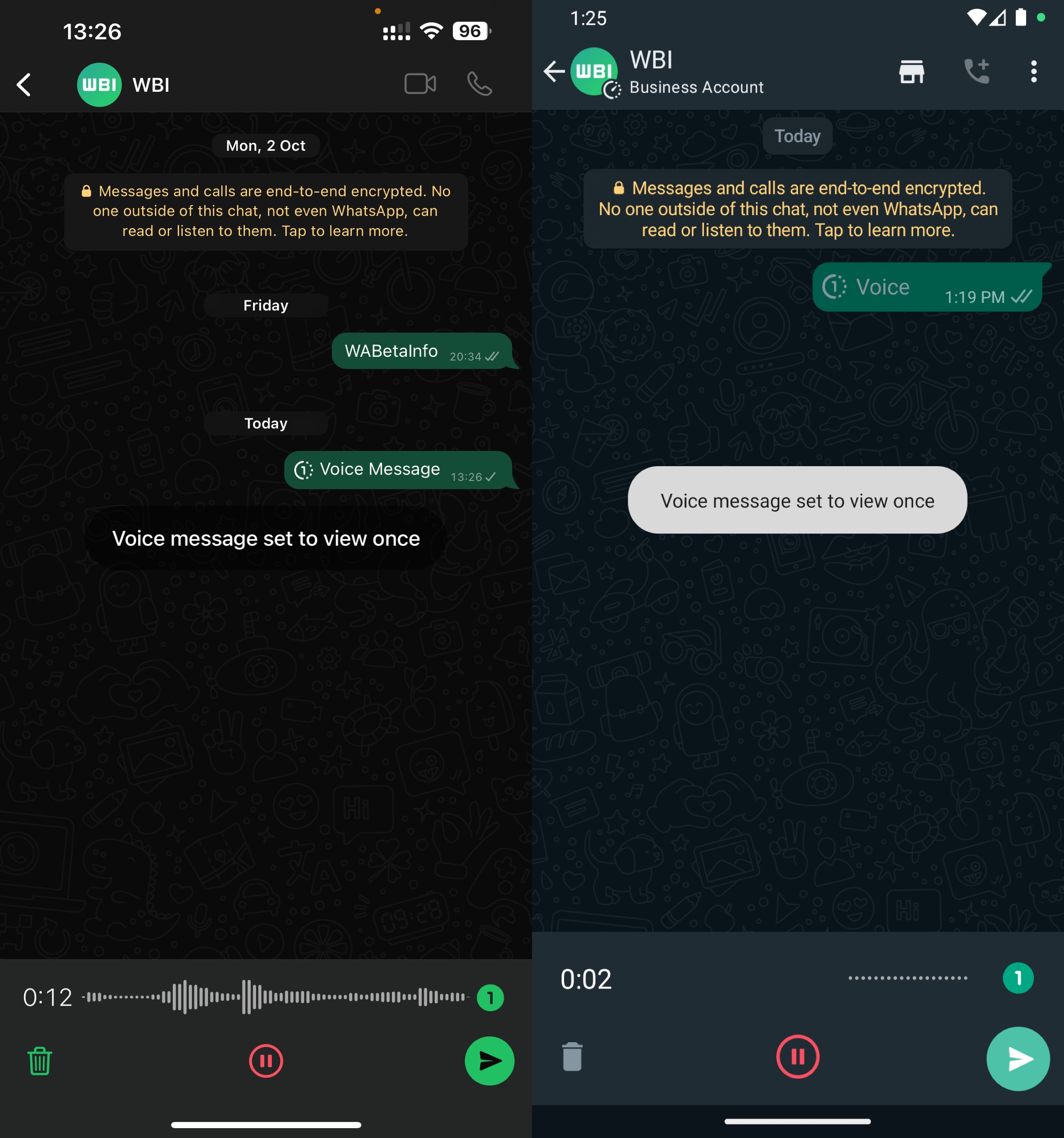The popular messaging platform WhatsApp has been introducing a lot of new features recently, and it seems there are more to come. After announcing support for passkeys, WhatsApp is now rolling out self-destructing audio messages to users who have the beta version of the app installed on their phones.
Self-destructing audio messages coming to WhatsApp
The news was first reported by WABetaInfo, which learned that some users running the latest version of WhatsApp Beta will be able to send self-destructing audio messages. The feature works pretty much in the same way as sending photos and videos with “View Once” enabled. With this option, the media disappears once it has been opened by the other person.
View Once was introduced in 2021. A year later, WhatsApp began blocking screenshots and screen recordings of these types of media. Users most likely won’t be able to download or record self-destructing audio messages either.
“WhatsApp is introducing a new feature to allow users to share voice notes with view once mode enabled for added privacy. This feature is available to some beta testers who install the latest versions of WhatsApp beta,” the report explains. In a screenshot shared by the website, we can see the “1” button that shows up when recording an audio message.
Unfortunately, there’s no word on when WhatsApp will make this feature available to the public, as not even all beta users have access to it at the moment. On iOS, WhatsApp Beta is only available through TestFlight – and getting an invitation is quite difficult.

More about WhatsApp
In addition to passkeys and self-destructing audio messages, WhatsApp is also working on an iPad app for the first time. Currently available as a beta, the iPad app works in exactly the same way as the Mac app, allowing users to connect their WhatsApp account from a phone to use it on the tablet.
In the meantime, you can download the current version of WhatsApp for iPhone for free on the App Store.
FTC: We use income earning auto affiliate links. More.





















Discussion about this post